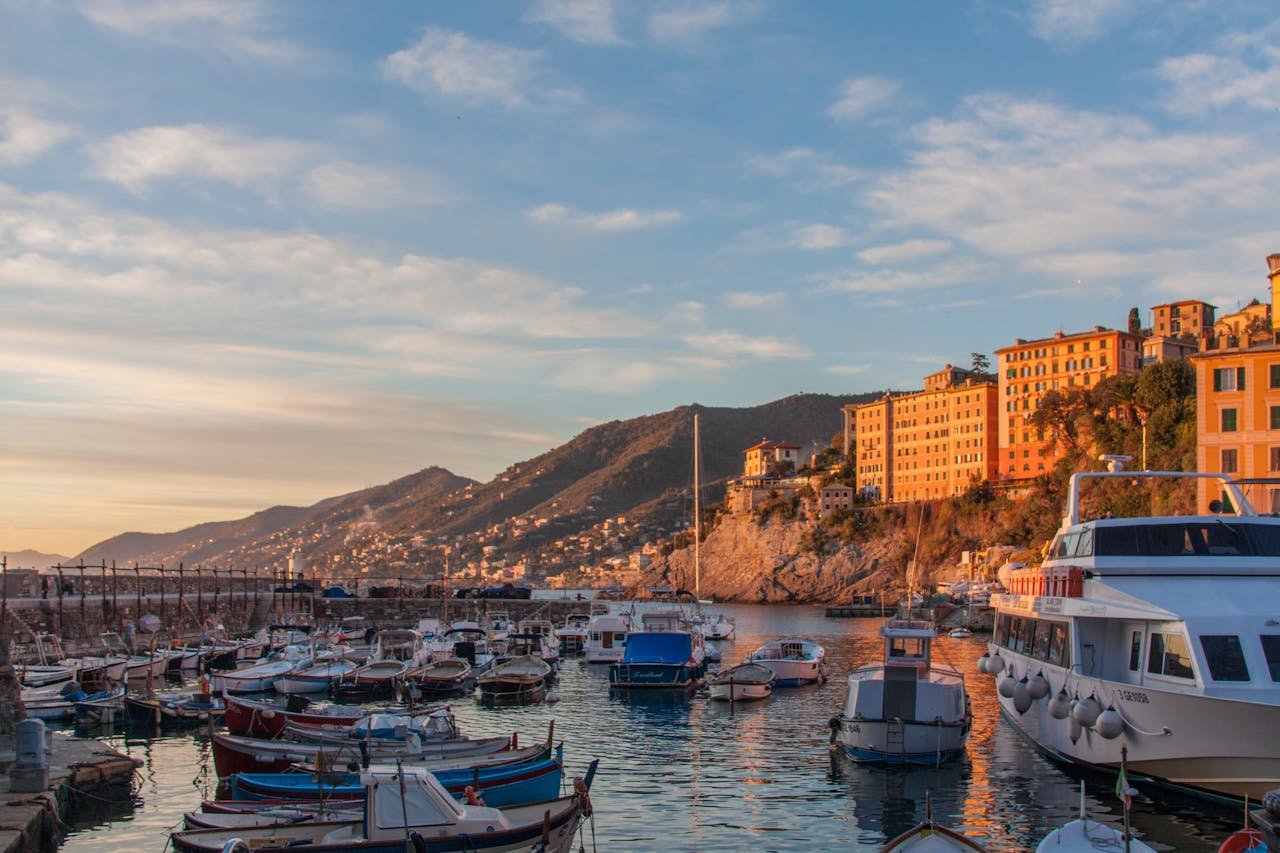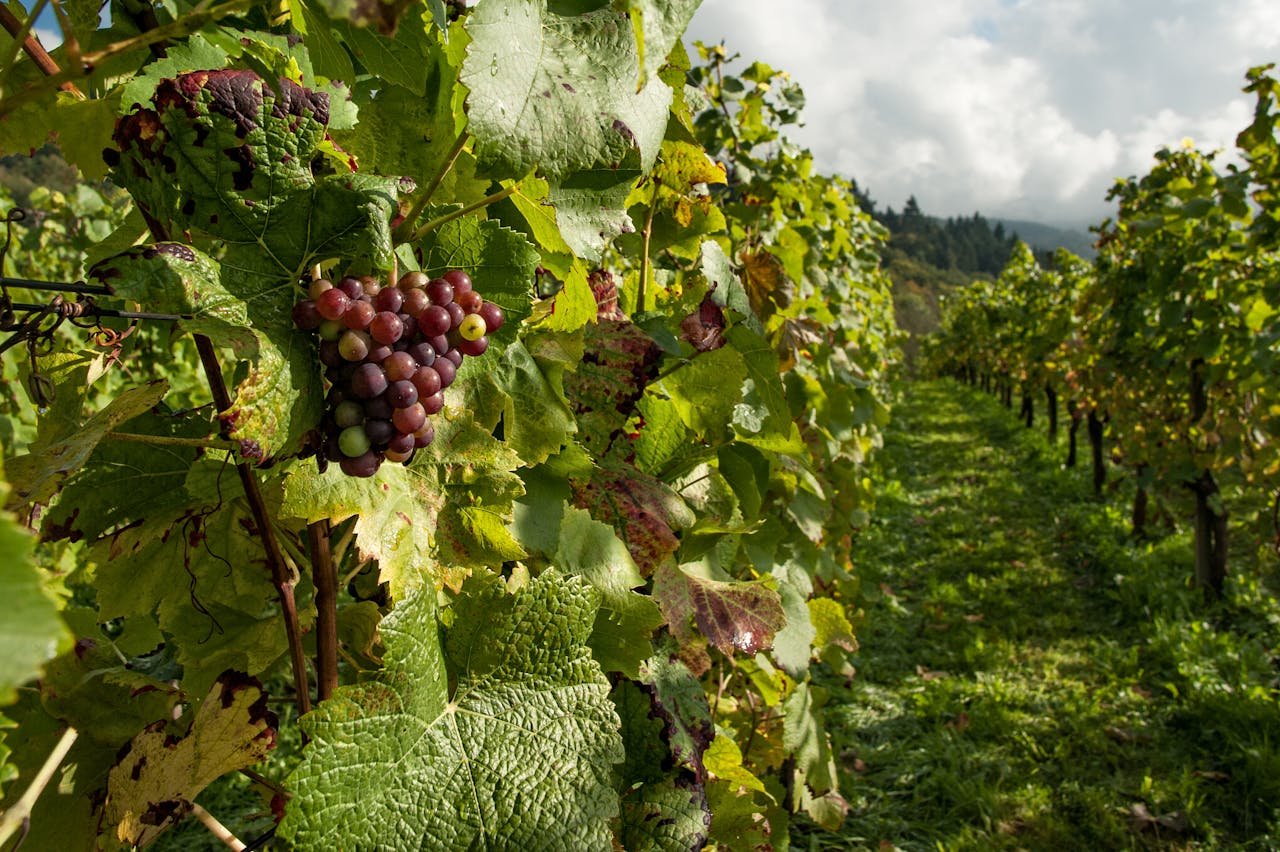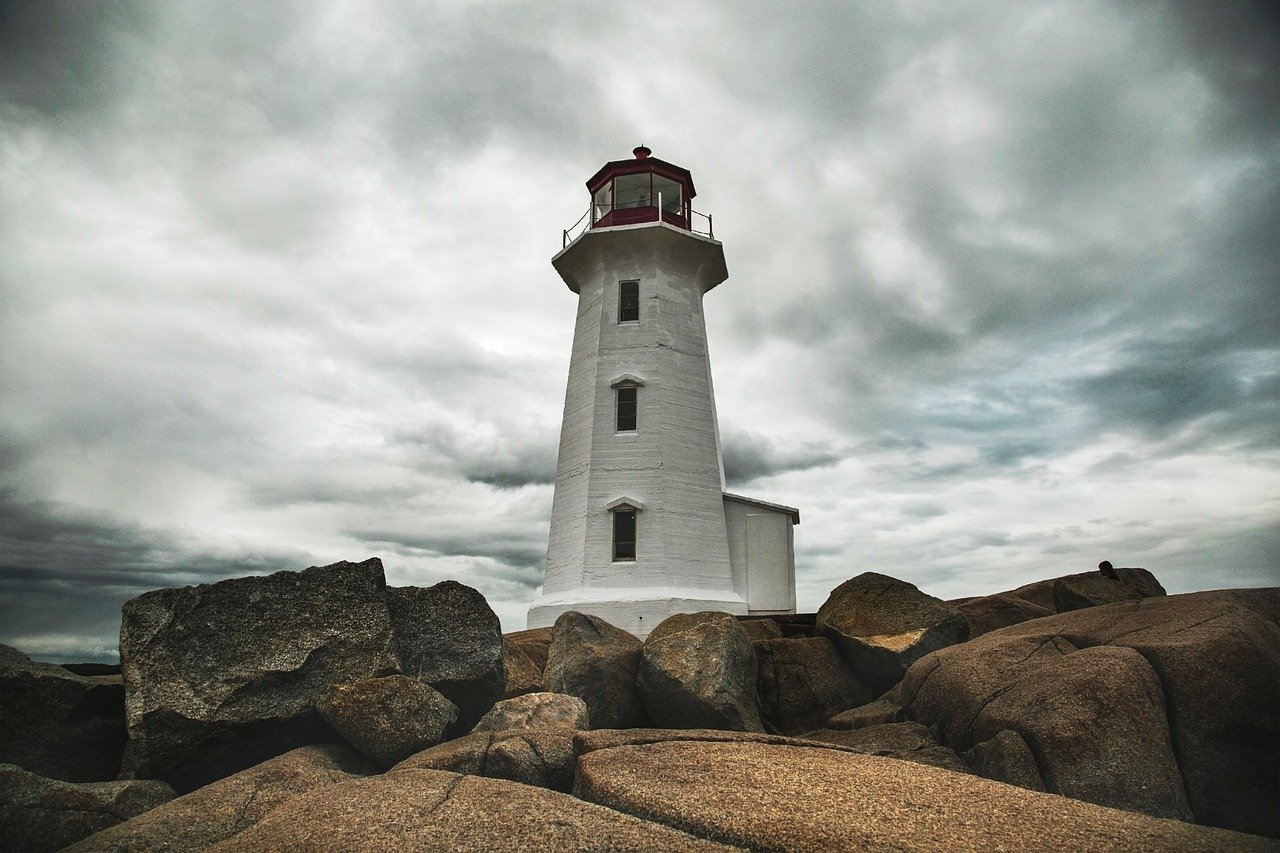
I’ll be honest—I didn’t expect to fall for Nova Scotia the way I did. Maybe it was the way the fog rolled in off the Atlantic like some moody romantic lead in a period drama, or perhaps it was that first bite of lobster roll that made me question every food decision I’d made before that moment. But somewhere between the lighthouse-dotted coastline and a fiddle session in a pub that smelled like sea salt and optimism, Nova Scotia stopped being just another Canadian province on my list and became something more like… well, home. Or at least the place I’d run away to if real life ever got too real.
This isn’t going to be one of those clinical travel guides that reads like a Wikipedia entry had a baby with a brochure. Consider this what it is: a love letter. A slightly obsessive, possibly too-detailed confession about why this sliver of Atlantic Canada deserves a spot on your bucket list—and maybe, if you’re lucky, in your heart too.
Why Nova Scotia Hits Different
There’s something about Nova Scotia that feels like stepping into a memory you didn’t know you had. It’s not flashy. It’s not trying to compete with the Banffs or Niagara Falls of the travel world. Instead, it offers something quieter, more textured—like a really good novel you can’t put down even though nothing explosive is happening on every page.
The province sits on Canada’s east coast, jutting into the Atlantic like it’s reaching for Europe (which, geographically, it kind of is). With a population of under a million people spread across fishing villages, cosmopolitan Halifax, and communities where everyone genuinely knows everyone, it maintains this rare balance between accessible and undiscovered.
I think what gets me most is the authenticity. In an age where every destination seems curated for Instagram, Nova Scotia is refreshingly itself. The weathered fishermen hauling traps at dawn aren’t performing for tourists—they’re just doing what their families have done for generations. The Celtic music sessions in Cape Breton aren’t manufactured cultural experiences; they’re Tuesday night.
The Cabot Trail: Where the Road Becomes the Destination
Let’s talk about the Cabot Trail—arguably one of the most spectacular coastal drives on the planet, and I’m including California’s Highway 1 and Norway’s Atlantic Road in that statement. This 298-kilometer loop around Cape Breton Island is the kind of drive that makes you understand why people buy convertibles.
I did it in early October, which locals told me was either brilliant or insane depending on the weather gods’ mood. The maples were performing their annual show-off routine, turning the hillsides into something that looked Photoshopped but definitely wasn’t. The road twists along clifftops where the Gulf of St. Lawrence crashes below with the kind of drama that makes you want to write bad poetry.
The thing about the Cabot Trail is that it’s not just the views—though those alone justify the trip. It’s the stops. The tiny communities like Chéticamp where Acadian French fills the air and you can watch rug hookers (the craft, people) create intricate tapestries. The hiking trails in Cape Breton Highlands National Park where you might spot moose if you’re quiet and fortunate. The lookouts where you pull over for “just a minute” and emerge forty-five minutes later with a memory card full of photos that still won’t capture it.
Halifax: Small City, Big Personality
Halifax surprised me. I’d expected a sleepy maritime city, pleasant but forgettable. Instead, I found this vibrant, walkable gem that felt like a bigger city shrunk down to human scale—all the culture and food scene without the soul-crushing commutes and $18 cocktails. Well, okay, some cocktails were $18, but at least the bartender remembered your name by round two.
The waterfront boardwalk is the city’s living room where everyone hangs out. You’ve got the Maritime Museum of the Atlantic where you can geek out on Titanic artifacts (yes, that Titanic—Halifax was the closest major port and handled the recovery). You’ve got the historic properties—colorful buildings that now house shops and restaurants, their Victorian bones dressed up in modern purpose.
But perhap the best thing about Halifax is how it eats. The seafood is absurdly fresh—like, the fish was probably still swimming this morning fresh. I had fish and chips at Willman’s Fish & Chips that made me briefly consider moving to Nova Scotia just for regular access. The craft beer scene is quietly excellent (shoutout to Garrison Brewing and their hoppy creations). And donairs—Halifax’s unofficial official food—are this beautiful, messy gift to humanity involving spiced meat, sweet sauce, and zero self-consciousness.

Lunenburg: UNESCO World Heritage Site That Actually Deserves It
Here’s where I’m going to get a bit preachy: you absolutely must visit Lunenburg. This technicolor fishing town on the South Shore is one of only two urban communities in North America designated as a UNESCO World Heritage Site, and it earns that title with every brightly painted building and narrow, hilly street.
Founded in 1753, Lunenburg looks like someone took a German fishing village, moved it to Nova Scotia, and told it to never change. The wooden architecture—painted in reds, blues, yellows, greens—creates this almost surreal streetscape where you can’t take a bad photo even if you try. I stayed at a B&B where my room overlooked the harbor, and I spent an embarrassing amount of time just watching fishing boats come and go like some kind of maritime meditation.
The Fisheries Museum of the Atlantic is surprisingly engaging, even if you don’t think you care about the history of cod fishing (spoiler: you will after visiting). You can board actual fishing vessels, including the schooner Theresa E. Connor, and suddenly those sea shanties make a lot more sense.
The Bay of Fundy: Nature’s Twice-Daily Magic Trick
The Bay of Fundy has the highest tides in the world—we’re talking up to 16 meters (that’s about 53 feet for my American friends). Twice a day, 160 billion tons of water flow in and out of this bay, reshaping the coastline in a rhythm older than human civilization.
I watched this phenomenon at Hopewell Rocks, where you can walk on the ocean floor at low tide among these massive flowerpot rock formations, then kayak around those same formations at high tide six hours later. It’s the kind of thing that makes you feel very small and very lucky simultaneously. The ocean’s power is humbling when you’re standing where it will be ten meters deep in a few hours.
The fossil cliffs at Joggins along the bay are another world wonder—300-million-year-old fossils just sitting there in the cliff face, casual as you please. It’s like nature’s own museum where continental drift does the curation.
Annapolis Valley: Wine, Apples, and Pastoral Perfection
I didn’t expect Nova Scotia to have a wine region, but the Annapolis Valley proved me delightfully wrong. This fertile valley between two mountain ranges has a microclimate perfect for growing grapes, apples, and various other things that become delicious.
The wineries here focus on cool-climate varieties, and Nova Scotia’s sparkling wines—particularly those from Benjamin Bridge and L’Acadie Vineyards—are genuinely world-class. I’m not being patriotic or generous; these bubbles compete with Champagne, and I will die on that hill.
The valley also does fall like nowhere else. The apple orchards—this is serious apple country—turn into these postcard scenes where you half expect Anne of Green Gables to come skipping through. Towns like Wolfville have that college-town charm (home to Acadia University) with cafes, bookshops, and the kind of main street that makes you want to slow down.

The People: Maritime Hospitality Isn’t a Marketing Slogan
Look, I’ve traveled enough to know when friendliness is performative. But Nova Scotians seem genuinely, almost pathologically friendly. Strangers will strike up conversations at bus stops. Shopkeepers will spend twenty minutes giving you directions that include personal anecdotes. Someone will probably invite you to a kitchen party or a ceilidh (pronounced KAY-lee, and yes, you should go).
This hospitality has roots in the province’s history. Nova Scotia has been shaped by waves of immigration—Indigenous Mi’kmaq, French Acadians, British Loyalists, Scottish Highlanders, Black Loyalists and Jamaican Maroons, Lebanese, and more recently, people from all over the world. This layering of cultures created communities that understand the value of welcoming strangers, probably because everyone’s ancestors were strangers here once.
Seasons: Picking Your Perfect Time
Nova Scotia works year-round, but each season has its personality:
Summer (June-August): Peak tourist season for good reason. Warm (well, warm for Atlantic Canada—think 20-25°C/68-77°F), festivals everywhere, all attractions open. Beaches like Martinique Beach actually feel Mediterranean if you squint and have a good imagination.
Fall (September-October): My personal favorite. Fewer crowds, spectacular foliage, harvest season means fresh everything, and the weather is crisp but pleasant. The fall colors in Cape Breton could make a grown person weep.
Winter (November-March): Quiet, sometimes harsh, but magical if you embrace it. Ski Wentworth or Ski Martock, enjoy storm watching, and experience true maritime winter. Just prepare for weather that can’t make up its mind.
Spring (April-May): Mud season transitions to bloom season. It’s beautiful but unpredictable—pack layers and waterproofs.
Practical Bits (Because Love Letters Need Logistics Too)
Getting There: Halifax Stanfield International Airport is your main gateway, with direct flights from major US and European cities. You can also drive from New England or take the ferry from Maine to Yarmouth.
Getting Around: Rent a car. Public transit exists in Halifax but exploring the province requires wheels. The roads are good, traffic is minimal outside Halifax, and the freedom to stop at every scenic lookout (there are dozens) is essential.
Where to Stay: Range from luxury resorts like Keltic Lodge perched on Cape Breton cliffs to charming B&Bs in heritage homes to budget-friendly motels. Book ahead for summer and fall, especially in popular areas.
Budget: Nova Scotia is reasonably affordable by North American standards. Figure $100-150 CAD for mid-range accommodation, $30-50 for meals, less if you hit the fish shacks and food trucks that serve some of the best eats anyway.
The Bittersweet Part
Here’s the thing they don’t tell you about falling for a place: leaving gets harder every time. My last morning in Nova Scotia, I drove to Peggy’s Cove at sunrise—yes, I know it’s touristy, but sometimes the touristy spots are popular for legitimate reasons. The lighthouse stood against the pink sky, waves crashed against ancient granite, and I felt that specific ache of knowing I’d be back but not knowing when.
Nova Scotia isn’t perfect. The winters can be brutal. Economic opportunities aren’t as abundant as in larger Canadian cities. The geographic isolation means things take longer to arrive, both literally and metaphorically. But these imperfections somehow add to its character rather than detract from it.
This place taught me that not every destination needs to shout for attention. Some places whisper, and if you lean in close enough, what they say changes you. Nova Scotia is a slow burn, a place that reveals itself in layers—in the taste of Digby scallops, in the sound of Gaelic songs, in conversations with strangers who become friends over the course of one pint.
So consider this your invitation. Visit Nova Scotia. Drive the coastlines, eat the seafood, talk to the locals, get lost on purpose, and let this place work its quiet magic on you. Just don’t blame me when you start researching immigration requirements or looking at real estate listings in fishing villages.
Some love affairs are meant to last.
Frequently Asked Questions About Nova Scotia
Question: What is Nova Scotia best known for? Answer: Nova Scotia is best known for its dramatic coastal scenery, fresh seafood (especially lobster), maritime history including Titanic connections, the UNESCO World Heritage Site of Lunenburg, the spectacular Cabot Trail drive, and the Bay of Fundy with the world’s highest tides.
Question: How many days do you need to explore Nova Scotia? Answer: A minimum of 5-7 days allows you to see the highlights including Halifax, the South Shore, and Cape Breton. However, 10-14 days gives you time to really explore without rushing, experience the different regions, and embrace the slower pace that makes Nova Scotia special.
Question: What is the best month to visit Nova Scotia? Answer: September and early October offer the best combination of pleasant weather, fall foliage, fewer crowds, and harvest season. July and August are warmest but busiest. June offers spring blooms and longer days with smaller crowds.
Question: Is Nova Scotia expensive to visit? Answer: Nova Scotia is moderately priced compared to other North American destinations. Accommodation ranges from $100-150 CAD per night for mid-range options, meals cost $15-40 CAD, and activities are reasonably priced. It’s more affordable than major cities but pricier than some rural US destinations.
Question: Can you see whales in Nova Scotia? Answer: Yes, whale watching is excellent from May through October, particularly around Cape Breton, the Bay of Fundy, and along the Eastern Shore. You can spot finback, humpback, minke, and pilot whales, plus dolphins and porpoises.
Question: Do you need a car in Nova Scotia? Answer: A car is highly recommended for exploring beyond Halifax. While the capital has walkability and some public transit, the province’s best attractions—coastal villages, the Cabot Trail, Bay of Fundy, and scenic lookouts—require personal transportation.
Question: What food is Nova Scotia famous for? Answer: Nova Scotia is famous for lobster, Digby scallops, fish and chips, seafood chowder, Halifax donairs (a local specialty), blueberries, oatcakes, Solomon Gundy (pickled herring), and increasingly, locally produced wines and craft beers.
Question: Is Nova Scotia similar to Ireland or Scotland? Answer: Nova Scotia (Latin for “New Scotland”) shares cultural DNA with Scotland, particularly in Cape Breton where Gaelic culture, music, and festivals thrive. The landscape features similar rugged coastlines, green hills, and fishing villages, though the connection is cultural heritage rather than exact duplication.
Question: Where is the most beautiful place in Nova Scotia? Answer: Beauty is subjective, but the Cabot Trail in Cape Breton consistently ranks as the most spectacular area, combining dramatic coastal cliffs, mountain vistas, and charming villages. Lunenburg, Peggy’s Cove, and the Bay of Fundy are also stunning in different ways.
Question: Can you swim in Nova Scotia beaches? Answer: Yes, though water temperatures vary significantly. The South Shore beaches along the Atlantic are cooler (15-18°C/59-64°F in summer), while the Northumberland Strait beaches can reach 20-22°C/68-72°F and are considered some of the warmest north of the Carolinas.
Top Travel Recommendations for Nova Scotia
- Keltic Lodge Resort & Spa – Dramatic clifftop resort in Cape Breton Highlands National Park offering luxury accommodations, championship golf, and stunning ocean views from every angle.
- The Westin Nova Scotian – Historic Halifax hotel connected to the waterfront, combining heritage architecture with modern amenities and a central location for exploring the capital.
- Cabot Links Golf Course – World-renowned links golf course in Inverness, Cape Breton, consistently ranked among the top courses globally with breathtaking coastal scenery.
- Tidal Bore Rafting Adventures – Experience the Bay of Fundy tides through Zodiac boat tours or rafting adventures that ride the tidal bore wave—thrilling and educational.
- Halifax Waterfront Boardwalk – Three-mile boardwalk featuring restaurants, museums, shops, and the historic seaport, perfect for strolling and people-watching.
- Peggy’s Cove – Iconic fishing village with Canada’s most photographed lighthouse perched on ancient granite, representing quintessential maritime beauty despite tourist crowds.
- Cape Breton Highlands National Park – Over 950 square kilometers of wilderness offering hiking trails, wildlife viewing, camping, and the Cabot Trail’s most spectacular sections.
- Fortress of Louisbourg – Massive reconstructed French fortress from the 1700s with costumed interpreters bringing 18th-century life to vivid reality through North America’s largest historical reconstruction.
- Wolfville Farmers Market – Saturday morning market in the Annapolis Valley showcasing local produce, crafts, baked goods, and the community spirit that defines small-town Nova Scotia.
- Hopewell Rocks – Dramatic flowerpot rock formations carved by Bay of Fundy tides, offering the unique experience of walking the ocean floor then kayaking the same area hours later.
- Halifax Seaport Farmers’ Market – Oldest continuously operating farmers market in North America, open year-round with local vendors, prepared foods, and crafts in a modern waterfront building.
- Lunenburg Walking Tours – Guided tours through the UNESCO World Heritage town revealing architecture, shipbuilding history, and stories that bring colorful buildings to life.
- Five Fishermen Restaurant – Historic Halifax restaurant in a former funeral home (yes, really) serving exceptional seafood in an atmospheric setting with alleged ghost sightings.
- Truro’s Tidal Bore – Free natural phenomenon where incoming Fundy tides create a wave rushing up the Salmon River—check tide schedules and arrive early for best viewing.
- Alexander Keith’s Brewery – Historic brewery offering entertaining tours with costumed guides, beer history, and samples of Nova Scotia’s most famous beer brand founded in 1820.
- Skyline Trail – Most popular Cape Breton Highlands hike, a 7.5km loop leading to dramatic clifftop views where moose sightings are common at dawn and dusk.
- White Point Beach Resort – Family-friendly oceanfront resort on the South Shore offering beach access, nature trails, dining, and various activities in a relaxed maritime setting.
- Whale Watching Tours – Cape Breton – Multiple operators offer tours from Pleasant Bay and other locations to spot whales, dolphins, and seabirds in their natural habitat.
- Ross Farm Museum – Living history farm demonstrating 19th-century agriculture with heritage breeds, wagon rides, and hands-on activities showing Nova Scotia’s rural past.
- Citadel Hill National Historic Site – Star-shaped fortress overlooking Halifax Harbor with guided tours, noon gun ceremony, and military reenactments bringing 19th-century garrison life to vibrant reality.






